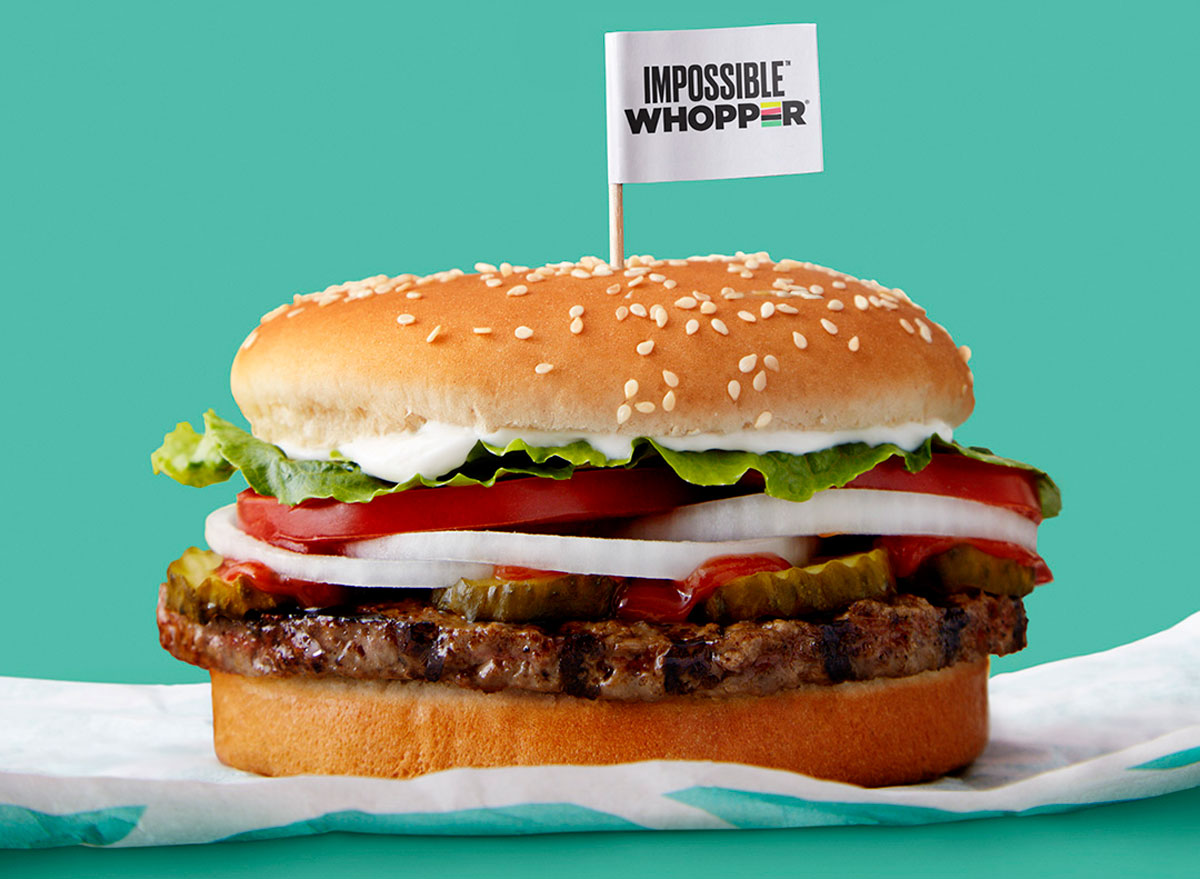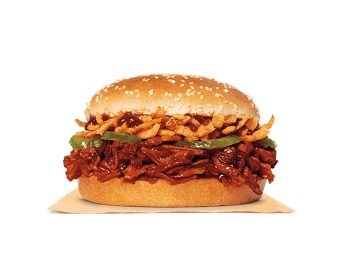Burger King's Impossible Whopper Is Good for a Plant-Based Version, But It Won't Win Over All Carnivores
Truly tasty meat alternatives have finally started being accepted into the mainstream, with products breaking into the nationwide fast-food market this year. Beyond Meat busted out its meatless hamburger patties at all Carl's Jr. locations in January 2019, and Dunkin' has a Beyond Meat breakfast sandwich. And now, fast-food giant Burger King has added an Impossible Whopper made from Impossible Foods' latest creation to their menu, after a successful spring trial period in St. Louis.
The rollout of the Whopper imposter hit all BK locations on August 8th, so I headed over to the nearest location in Raleigh, NC, and picked up a good ole meat-filled Whopper and an Impossible Whopper to get a better handle on the differences between the two. But first, for those who aren't really sure what makes up the meat alternative from Impossible Foods, here's a short analysis.
What is the Impossible Burger made of?

Impossible's burger "meat" is crafted from soy protein concentrate with a little bit of potato protein and soy protein isolate. The fat comes from coconut oil and sunflower oil. It's bound together with plant fiber and modified food starch. Vitamins, minerals, simple sugars, and some flavor enhancers are also added in.
To make the faux meat taste like something that a carnivore would crave, Impossible adds in a special molecule called "heme," which you'll see on the label as "soy leghemoglobin." Heme is found in plant and animal cells and is a part of the protein called hemoglobin, which transports oxygen in your blood. Animal meat gets its bloody and juicy taste from heme, and it's also what gives cooking meat a satisfying aroma. Impossible Foods uses a soy-based version of heme called leghemoglobin to give their meat analog a flavor closer to real meat.
But enough of the intimate examination—let's get to the Whopper.
How does the Impossible Whopper taste?

Directly out of the drive-thru, I unwrapped the burger in the parking lot. It looked good and smelled fresh, with a nice layer of the typical Whopper ingredients—lettuce, tomato, pickle, onions, ketchup, mayo—topping the grill-marked, brown patty, all nestled in a soft and warm sesame seed bun. The first bite was delicious, with everything coming together as a burger should. The Impossible patty tasted truly "flame-broiled," with a nice char coming through strongly. I dug in and hungrily took a few more bites, impressed at the "meaty" grilled flavor and marveled at not really being able to tell that it wasn't really ground beef.
That feeling lasted until I broke open the real Whopper and took a few bites. All of the other flavors were there, along with the signature charred taste, but the burger portion had that real, fatty flavor that was missing from the faux Whopper. The chew of the meat was also better, with that kind of chunky, crumbly bite you get with grilled ground beef.
For a true comparison, I then pulled the Impossible patty out of all of the condiments and fixings to try it alone and unfettered. All by itself, it was like eating a flat liver meatloaf, solid and moist but with little texture or familiar feedback for your teeth and mouth.
If you're a vegetarian looking to get your hands on the Impossible Whopper, though, there's one major caveat you should know. The standard method of preparation includes cooking the patty on the same broilers where meat is prepared. As Burger King's website states, "a non-broiler method of preparation is available upon request." But you'll have to ask for that specifically if you don't want your patty cooked next to the meat.
What's the Impossible Whopper nutrition?

As prepared by Burger King, the Impossible Whopper will set you back 630 calories. The original Whopper has 660 calories, though, so there's not much of a difference. Even in terms of protein, the meat-based Whopper only has three grams more than the plant-based option.
Final verdict

The Burger King Impossible Whopper, as assembled in whole burger form, was good, almost great. It matched up well to the real deal, possibly because the thin, ¼ lb patty in there gets easily eclipsed and enhanced by the other ingredients. If you're looking for a meat alternative to a fast-food classic like the Whopper, this is a solid bet.
Instead of comparing this patty to its real meat version, if you look at the Impossible Whopper on its own as a plant-based fast-food product, it hits the mark with the traditional Whopper taste and toppings (the classic grill marks are even there!).
For real carnivores not interested in meat alternatives, nothing will compare to a traditional Whopper, of course, but if you're someone who's looking to experiment with plant-based eating, the Impossible Whopper is a good place to start the next time you're at the drive-thru.









